Osteochondrosis is a widespread disease, most people have varying degrees of onset by the age of 35-40. The most likely sites of osteochondrosis are the lower cervical, upper thoracic, and lower lumbar spine. The etiology of osteochondrosis, the specific cause and condition in which it occurs, is completely unknown. However, genetic susceptibility, age-related changes, injury, and impaired blood supply to tissues have direct effects.
During the development of the disease, the main effect is a change in the middle of the intervertebral disc, that is, dehydration. Recall that the intervertebral disc consists of the nucleus pulposus and the annulus fibrosus around it. Due to drying, the disc lost its shock absorbing function, leading to gradual destruction. In the development of the disease, there are four stages that differ in certain changes in the disc and adjacent tissues. The severity, symptoms, and treatment of spinal osteochondrosis directly depend on the stage of development of the pathology.
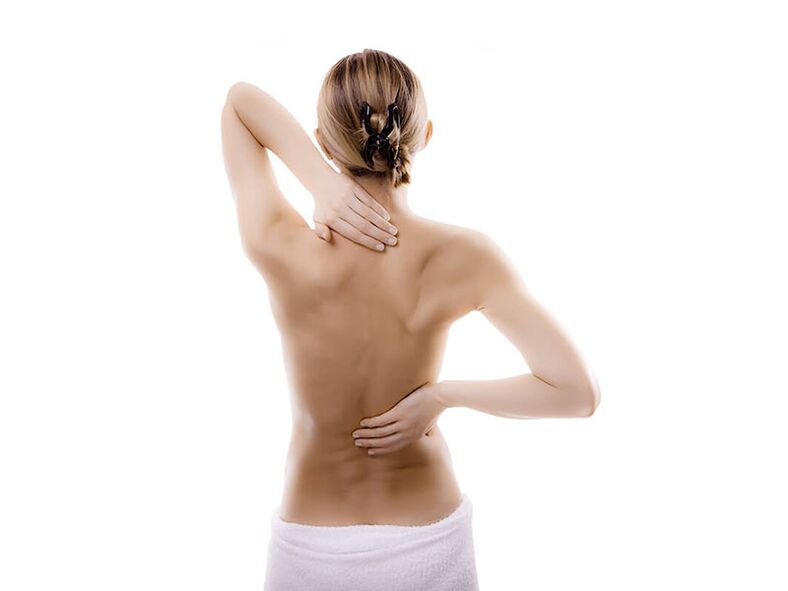
Symptoms and Causes of Osteochondrosis of the Spine
Let us briefly consider the stages of progression of osteochondrosis in terms of anatomical changes.
- The first stage. Clefts form in the inner layer of the annulus fibrosus and the nucleus pulposus. The nucleus penetrates the fissure and stimulates the nerve endings of the annulus fibrosus;
- second stage. Although the annulus fibrosus may be further stimulated by lesions of the nucleus pulposus, the fixation of the vertebrae will deteriorate. Abnormal mobility of the spine;
- The third phase. Gradually damage the annulus fibrosus. A nucleus herniation (herniation) beyond the anatomical boundaries of the annulus fibrosus, followed by rupture of the annulus and formation of an intervertebral herniation (herniation);
- Fourth stage. Degenerative changes in surrounding tissues (vertebrae, ligaments, nerves, blood vessels). Due to chronic inflammation, the disc scars, leading to the development of fibrosis.
There are 3 types of osteochondrosis depending on the position of the spine:
- Osteochondrosis of the cervical spine;
- Sternal osteochondrosis;
- Osteochondrosis of the lumbar spine.
Notably, some sources distinguish a fourth type—sacral osteochondrosis.

cervical osteochondrosis |
thoracic osteochondrosis |
lumbar osteochondrosis |
|---|---|---|
|
The main types of osteochondrosis are considered to be the cervical and lumbar spine. However, the thoracic spine is under constant pressure and is prone to severe degenerative changes, especially in young adults. Due to the peculiarities of the development of changes in the thoracic spine, neurological symptoms manifest at a later stage of the disease. In most cases, the disorder is caused by an injury (for example, from lifting too much weight).
|
Abnormalities are most commonly observed in the lumbar spine.
|
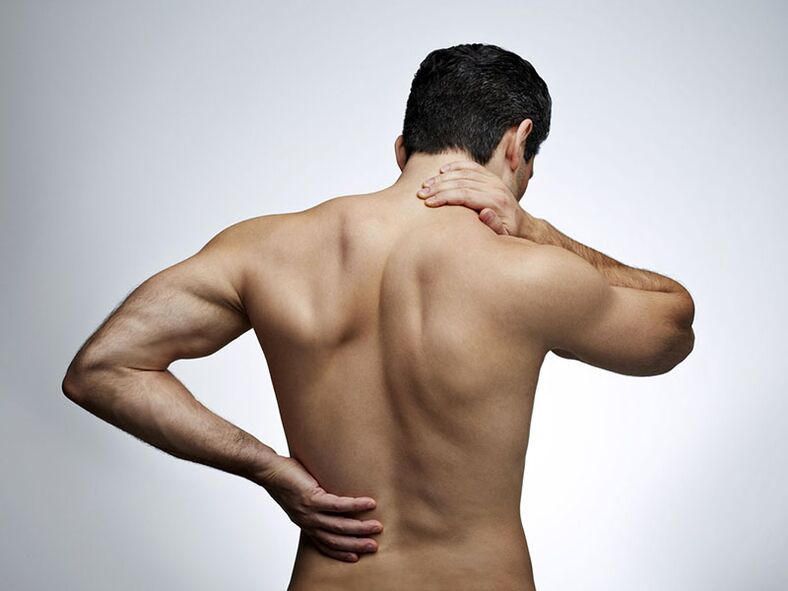
The etiology of the aforementioned osteochondrosis is not fully understood. However, we can name the main causes of osteochondrosis of the spine and demonstrate an impact on the development of the disease:
- Conventional dynamic and static loads on spines of different strengths. For example, loaders (weight-bearing) or miners (long periods in unnatural positions and heavy physical loads), drivers (vibration and a sedentary lifestyle) or office workers (a sedentary, sedentary lifestyle;
- back injury;
- Weak physical development or excess weight;
- Failure to maintain proper posture and bending;
- The result is flat feet and muscle imbalances that cause uneven load distribution in different parts of the spine;
- genetic characteristics;
- Hypothermia can lead to more intense symptoms of osteochondrosis;
- Finally, the process of human aging.
Diagnosis of spinal osteochondrosis
The initial diagnosis of the disease (osteochondrosis) is based on the patient's complaint, his examination and palpation of the spine. In addition, the affected part of the spine can be identified by the topography of the spread of pain, which can pinpoint the exact location of nerve compression (in the vertebrae of the neck, chest, lower back).
The main diagnostic method for diagnosing osteochondrosis is X-ray examination. On X-rays of the spine, degenerative changes in the intervertebral joints, narrowing of the intervertebral discs, intervertebral canals, and sclerotic changes in the spinal tissue are evident. At the same time, the identification of spinal lesions (especially in the early stages) is always difficult, since the processes taking place in this case are characteristic of many other diseases (tumors, metastases, ankylosing spondylitis, tuberculosis lesions).
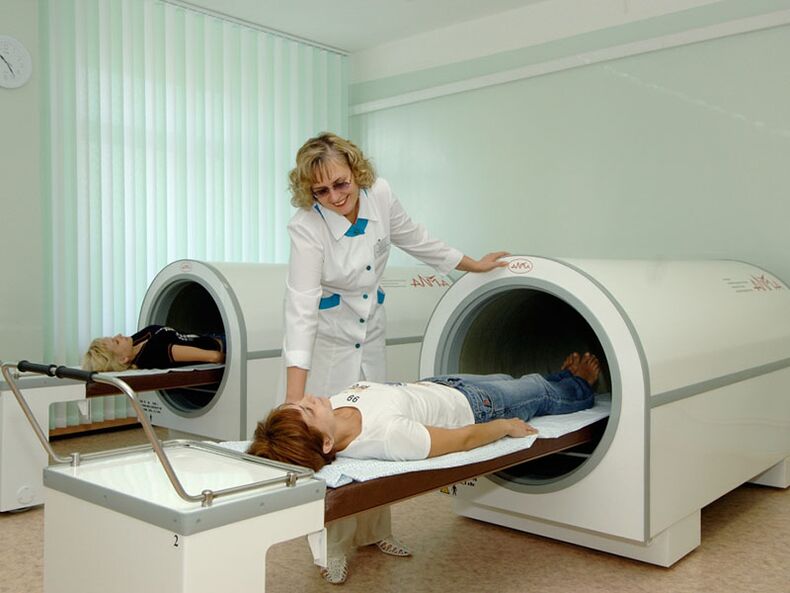
On frontal X-ray images, plate irregularities, increased or sharpened uncinate processes are detected. In the contour images, height drop, shape changes, disc herniation, osteophytes, and other vertebral body changes are evident. Small degenerative changes are not seen on ordinary X-rays, and X-rays are done with a contrast agent to detect them. The most complete information can be provided by discography - an X-ray examination in which contrast is introduced directly into the disc through a puncture.
Another study of the spine is the functional x-ray approach. The mobility or stillness of the intervertebral space can be determined thanks to the radiographs taken with the spine in maximum flexion and extension.
The most modern and high-tech research methods are computed tomography (hereinafter referred to as CT) and magnetic resonance imaging (hereinafter referred to as MRI). Although the first CT and MRI machines appeared in the 1970s and 1980s, and the technology is still actively developed and improved, it remains difficult for the general population to obtain due to the high cost of examinations or the lack of machines in local hospitals.
Treatment of spinal osteochondrosis
The treatment of osteochondrosis is a complex and long-term process. It is designed to reduce and eliminate the consequences of disc changes. Namely, inflammation, squeezing, poor blood flow, muscle spasms. Many types of therapy can help in this process, including the methods of Eastern healers. During the treatment of osteochondrosis, the patient needs complete rest.
In most cases, treatment is performed using non-invasive methods such as drug therapy, antiparasitic therapy, exercise therapy, etc. Invasive treatments, ie surgery, are rarely used. In this case, for example, when the hernia persists for more than six months and conservative treatment does not produce a positive effect.
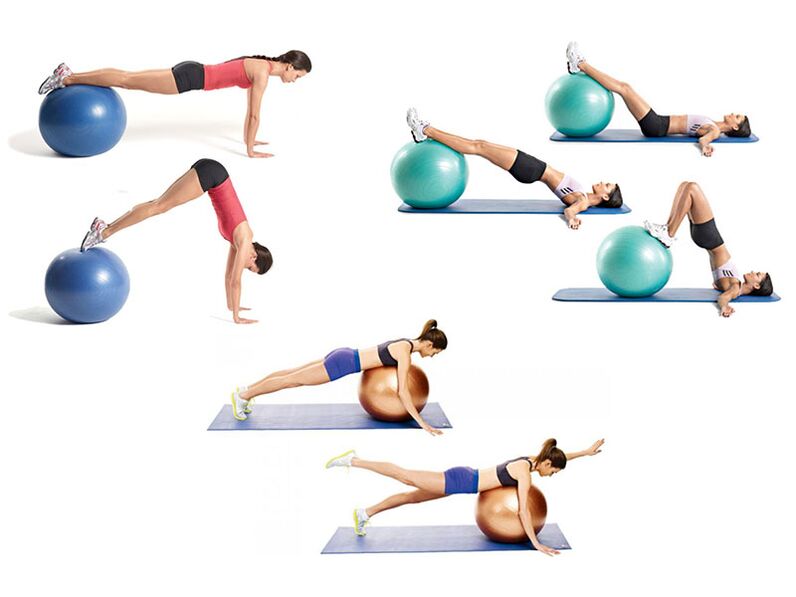
Osteochondrosis of the spine and its treatment are carried out by doctors of different specialties: neurologists, orthopedists, chiropractors, chiropractors, etc. However, appointments for diagnosis, testing and research are usually made by a neurologist and a chiropractor, if such a specialist is available clinically, due to his expertise in spinal disorders.
To sum up, we can say that the treatment of osteochondrosis is mainly divided into the following categories:
- Pain relief syndrome;
- relieve spasms;
- eliminate inflammation;
- reduce squeezing;
- improve blood flow;
- prevent further deterioration.
Let's take a look at commonly used treatments, each covering one or more of this list.
Physiotherapy
Physical therapy procedures are designed to improve blood microcirculation in the affected spinal area, eliminate pain and relieve edema. In addition, physical therapy can help reduce the dose of medication used. There are dozens of types of physical therapy. Here are some of them:
- Reflexology is the use of needles, electricity, and lasers to affect acupuncture points. Helps relieve cramps and improve blood flow;
- Kinesitherapy is treatment through exercise and specific physical exercise. In fact, it's a form of therapeutic gymnastics, but in an extended sense. This includes simulator training, group exercises under the guidance of a doctor, and spine stretching;
- Therapeutic swimming. Allows you to perform exercises with spinal injuries for those who are difficult to do. For example, the elderly, those who are overweight or have movement disorders. Note that the load distribution on the spine is uniform due to the lift of the water;
- Pulse current therapy, UHF therapy, nerve stimulation, magnetic therapy, massage, etc.
acupuncture
A unique approach from oriental medicine. Its essence lies in the use of special, very thin needles to enter specific parts of the body, literally, under the influence of gravity. These points were discovered by the experience of oriental healers over thousands of years and were later certified by official medicine. Acupuncture helps to eliminate even excruciating pain and has a positive effect on the entire nervous system and neurological disorders.
operation treatment
Surgery is only required when non-invasive treatments have had no positive effect or severe complications have occurred. The main method of surgical treatment is a discectomy - the removal of a damaged disc. However, even after surgery with a minimally invasive approach, recovery takes at least 6 months.
At the same time, surgery does not eliminate the need for conventional treatment for osteochondrosis. Because before surgery there is always a clear task to remove a specific defect: hernia, deformity, subluxation, etc. The surgery does not affect the general degenerative process of the cartilage tissue of the spine.
medical treatement
This type of treatment is most effective in the short term. The drug immediately relieves pain, eliminates inflammation, relieves spasms, and more. However, once they are withdrawn, their effects quickly wear off without the other procedures required to treat osteochondrosis. At the same time, you can't use drugs all your life, and sooner or later it will have side effects on your body.

Medications can be divided into primary and secondary treatments. They are often necessary to improve a patient's life. They are used to relieve pain (therapeutic block), reduce inflammation, relieve muscle spasms, and improve blood flow. In recent years, another drug, chondroprotective agents, has been increasingly used. However, drugs alone do not achieve long-lasting effects.
treatment at home
Home treatments for osteochondrosis include manual therapy (exercise therapy, Shants collars), acupuncture, and vacuum therapy. These methods help improve blood circulation and reduce congestion in the muscles and spine. As a result, tissue regeneration is significantly improved.
The procedures listed, combined with medication, provide an effective treatment that relieves unpleasant symptoms and improves general condition. In this case, special attention should be paid to proper nutrition and overweight regulation.
physiotherapy
Thanks to gymnastics, the mobility of the vertebrae is restored and the muscles and their circulatory system are strengthened. The latter is important because the spine is deprived of a blood supply system and the discs can only receive nutrients through adjacent tissues. In this case, it is necessary to distinguish between therapeutic exercises and any other training.
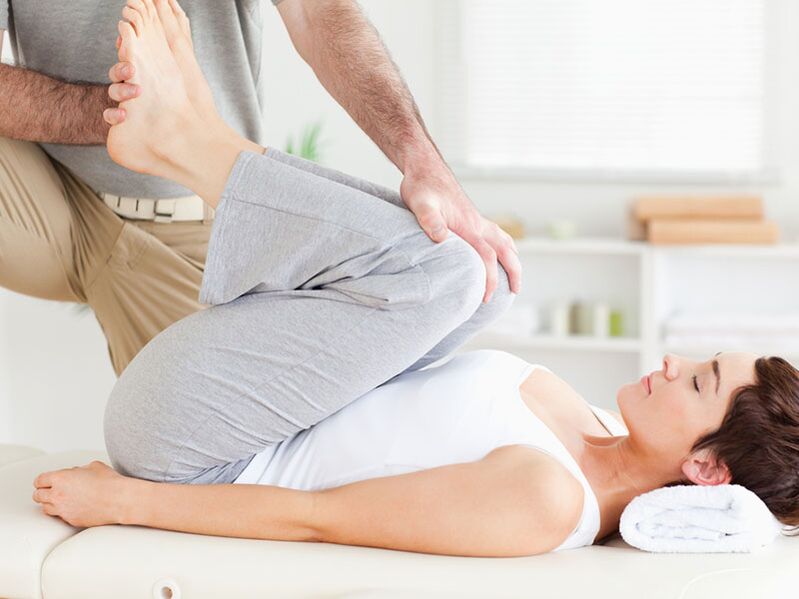
manual therapy
One of the most effective methods. As a manual therapist affects muscles, ligaments and bones. It improves posture, restores the "normal" structure of the bones, and relieves excessive muscle tension. Including, it directly affects the vertebrae.
Manipulative therapy for osteochondrosis should be performed on a regular basis, from once to several times a year, as needed. It is important to note that this is not a one-time, multi-dimensional procedure that lasts 10-20 times. Only then will it have a positive long-term impact.

























